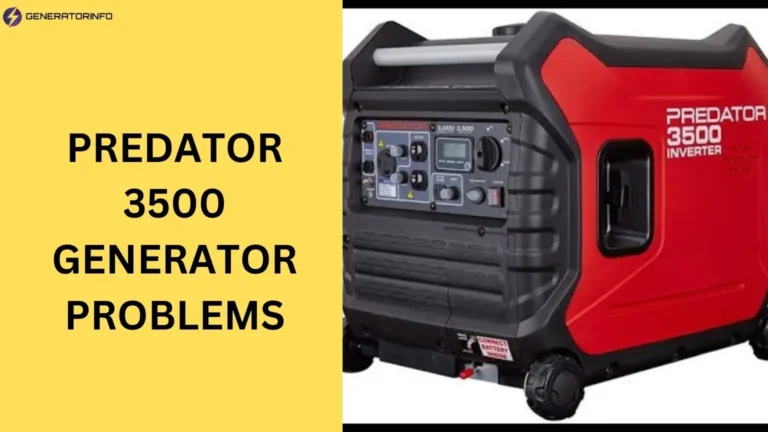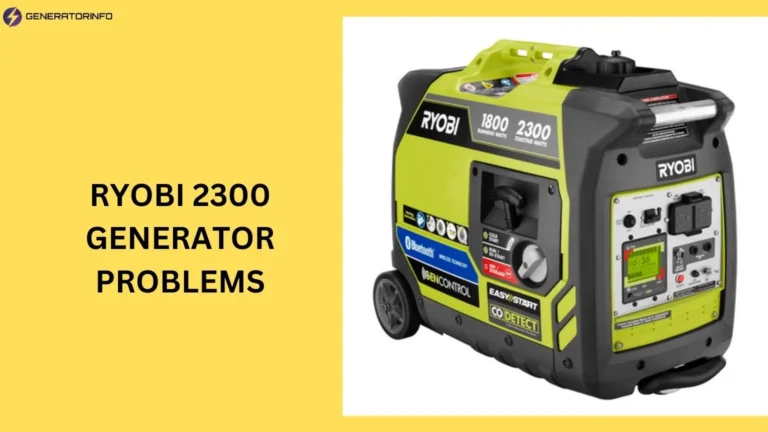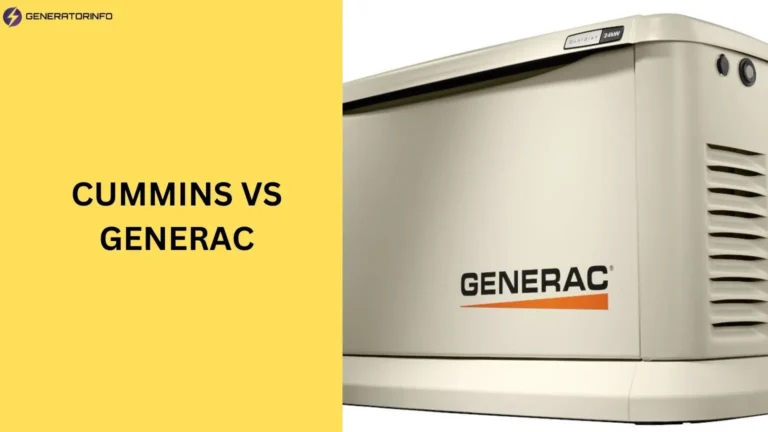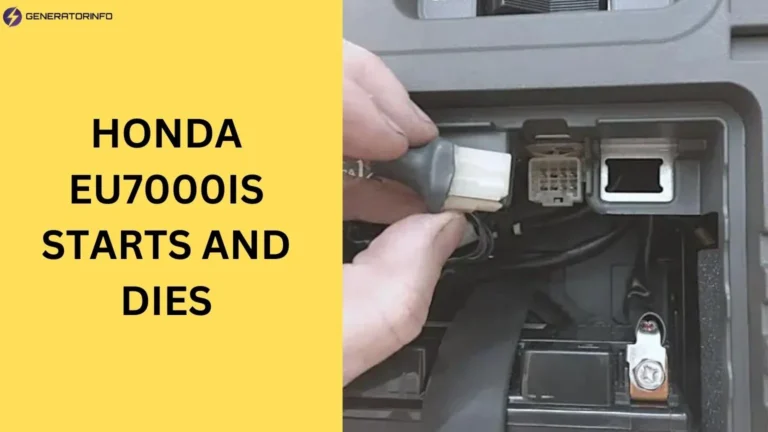Generac Generator Charger Missing AC (Troubleshooting)
Generators are essential for ensuring continuous power supply during outages, making generator chargers a critical component in maintaining their functionality.
Generac Generator Charger Missing AC, In this article, we delve into the issue of missing AC input in Generac generator chargers, exploring its implications and offering practical solutions.
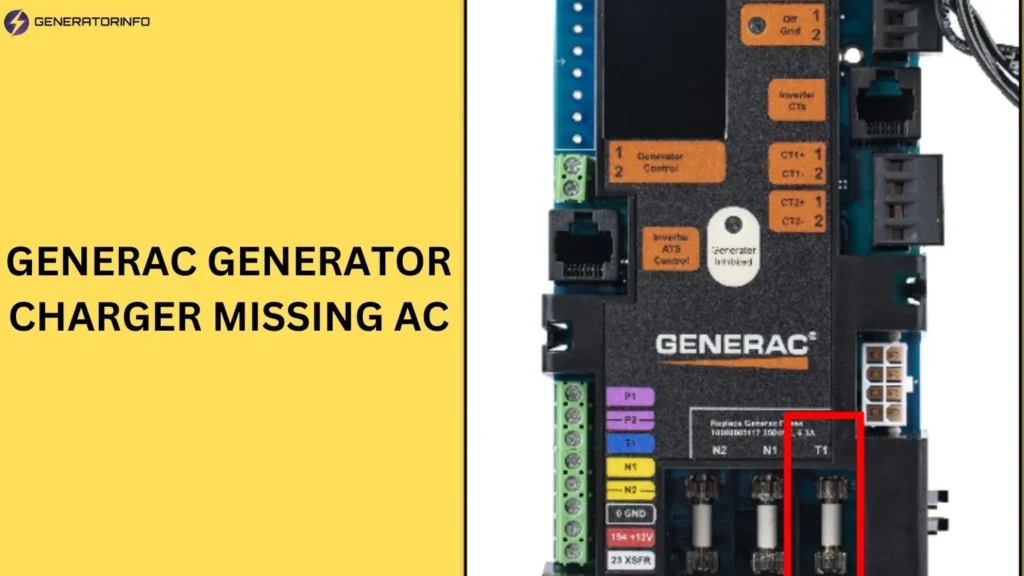
Generac Generator Charger Missing AC
Generators serve as a reliable backup during power interruptions, crucial for homes and businesses alike.
Central to their operation is the generator charger, which converts AC power from the utility grid or the generator itself into DC power to charge the battery.
This ensures the generator can start promptly when needed, making the charger system vital for seamless operation.
Generac B4177GS Generator Battery Charger Genuine
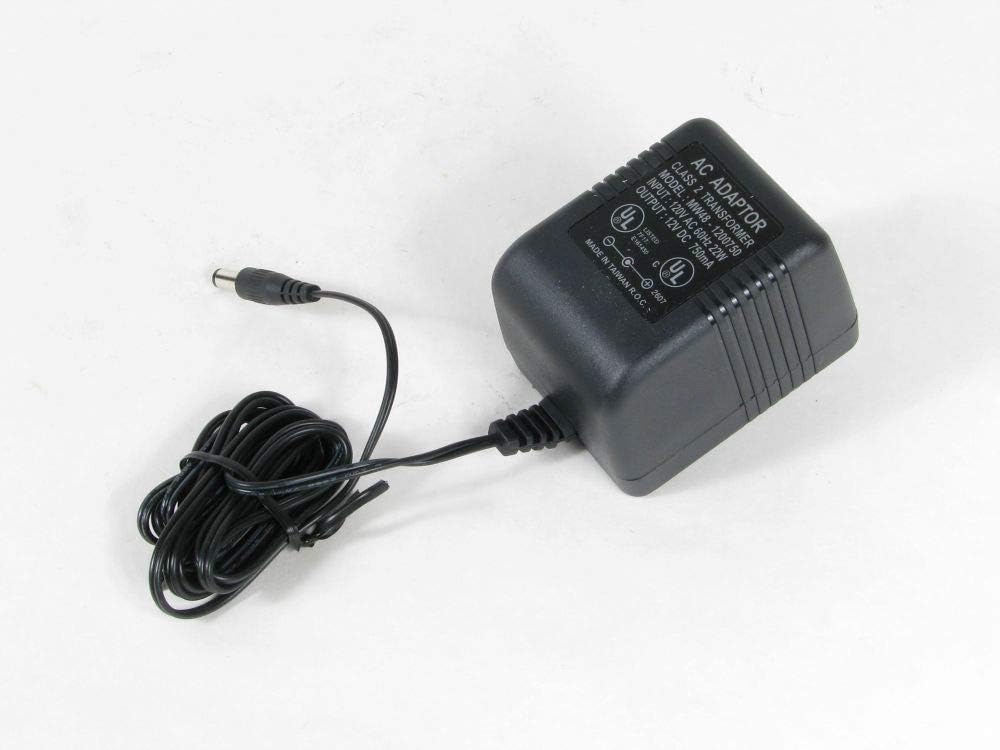
Understanding Generator Charger Systems
A generator charger system comprises several key components, including rectifiers, controllers, and monitoring mechanisms. These components work together to regulate and maintain the battery’s charge level, ensuring it remains sufficiently powered to start the generator during power outages.
Common Issues with Generator Chargers

Generator chargers are essential components in backup power systems, responsible for maintaining battery charge to ensure generators can start when needed. However, like any mechanical or electrical device, generator chargers can encounter various issues that affect their performance. Understanding these common issues is crucial for timely troubleshooting and maintenance to ensure the reliability of your backup power system.
Failure to Charge the Battery
One of the most common issues with generator chargers is their failure to charge the battery adequately. This can manifest as:
- Low Battery Levels: Despite being connected to AC power sources, the battery fails to reach optimal charge levels.
- Frequent Low Battery Alarms: The generator system may indicate low battery warnings, signaling an issue with the charger’s ability to maintain sufficient charge.
AC Input Problems
AC input issues are another prevalent concern, impacting the charger’s ability to convert AC power into DC power for battery charging. Symptoms include:
- No AC Input Detected: The charger may fail to recognize or receive AC power from the main supply or generator output.
- Intermittent Charging: Inconsistent charging cycles due to fluctuating AC input, leading to unreliable battery performance.
Overheating
Generator chargers can overheat, especially under heavy loads or in high-temperature environments. Overheating may result from:
- Inadequate Ventilation: Poor airflow around the charger unit can cause heat buildup, affecting its efficiency.
- Excessive Load: Operating the generator charger beyond its recommended capacity can lead to overheating and potential damage to internal components.
Faulty Connections and Wiring
Issues with connections and wiring are common sources of charger malfunction:
- Loose Connections: Loose or corroded electrical connections between the charger, battery, and AC power source can disrupt the charging process.
- Damaged Wiring: Wear and tear on cables and wiring can lead to electrical shorts or interruptions in the power supply to the charger unit.
Controller or Circuit Board Failures
Internal components like controllers or circuit boards can fail over time, affecting the charger’s overall functionality:
- Electronic Failures: Malfunctioning controllers may misinterpret signals or fail to regulate voltage properly, impacting charging efficiency.
- Circuit Board Issues: Physical damage or electrical faults on the circuit board can render the charger non-functional or unreliable.
Environmental Factors
Environmental conditions can also influence generator charger performance:
- Moisture and Corrosion: Exposure to moisture or corrosive environments can damage charger components, leading to premature failure.
- Extreme Temperatures: Operating in extreme cold or heat can affect battery performance and charger efficiency if not properly insulated or ventilated.
Lack of Maintenance
Neglecting regular maintenance can exacerbate issues with generator chargers:
- Dirty Components: Accumulation of dust, debris, or corrosion on charger components can hinder performance.
- Irregular Inspections: Infrequent checks for wear, damage, or operational status can result in undetected issues until they cause system failure.
Symptoms of a Missing AC Input
Identifying a missing AC input in your Generac generator charger is crucial for timely intervention. Symptoms include:
- Insufficient Battery Charging: The battery may fail to reach adequate charge levels, leading to frequent low battery warnings.
- Failure to Start: In severe cases, the generator may not start at all due to an insufficiently charged battery, impacting reliability during power outages.
Troubleshooting Steps
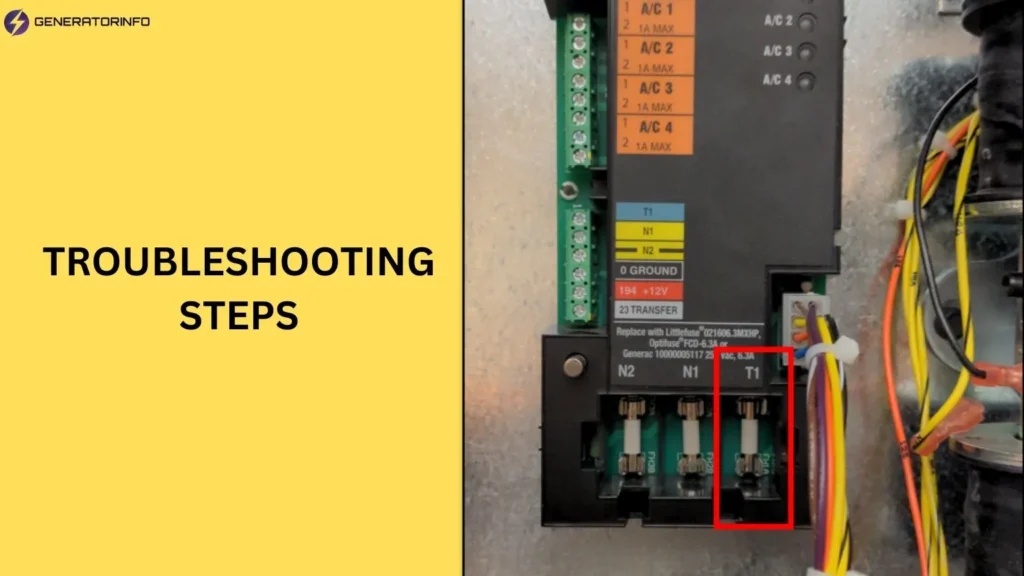
Troubleshooting generator chargers involves systematic checks to identify and resolve common issues efficiently. Follow these steps to diagnose and address problems effectively:
Check the AC Power Source
- Ensure the charger is receiving adequate AC power from the main supply or generator output.
- Verify connections for looseness, damage, or corrosion.
Inspect Charger Connections
- Examine cables and connectors for secure attachments and signs of wear.
- Tighten connections if loose and clean contacts to ensure proper electrical conductivity.
Test Voltage Output
- Use a multimeter to measure voltage at the charger’s terminals.
- Confirm voltage levels align with manufacturer specifications for proper operation.
Monitor Charger Operation
- Observe the charger during operation for any abnormal sounds, overheating, or erratic behavior.
- Address any unusual symptoms promptly to prevent potential damage or failure.
Consult Manufacturer Guidelines
- Refer to the generator charger’s user manual for specific troubleshooting tips and maintenance recommendations.
- Follow recommended procedures for resetting, recalibrating, or replacing components as necessary.
Technical Inspection
Perform a technical inspection using a multimeter to:
- Measure AC Voltage: Test voltage levels at the charger’s input terminals to verify if it is receiving sufficient AC power.
- Test Charger Functionality: Evaluate the charger unit itself to ensure it is operating correctly and converting AC power to DC power for battery charging.
Fixing the AC Input Issue
If troubleshooting reveals an issue with AC input:
- Repair or Replace Components: Address damaged cables, connectors, or the charger unit itself. Ensure replacements are compatible and installed correctly to restore AC input functionality.
- Consult a Professional: For complex issues or if unsure about the diagnosis, seek assistance from a qualified technician. They can provide expert guidance and ensure the charger system is restored without compromising generator performance.
Maintenance Tips for Generator Chargers
To prevent future issues with AC input and ensure optimal generator charger performance:
- Regular Inspection: Periodically inspect charger components for debris buildup, corrosion, or other signs of wear.
- Cleaning: Clean terminals and connectors to maintain good electrical contact and prevent disruptions in AC input.
- Follow Manufacturer Guidelines: Adhere to recommended maintenance schedules and practices outlined in the Generac generator manual.
People also ask
What does the charger missing AC mean on my Generac generator?
“Charger missing AC” on your Generac generator typically indicates that the generator charger is not receiving AC power from the main supply or generator output.
This issue prevents the charger from converting AC power into DC power to charge the battery effectively.
As a result, the battery may not receive adequate charge, potentially leading to insufficient power for starting the generator during outages.
It’s essential to diagnose and address this problem promptly to ensure your generator remains operational and reliable when needed most.
What does the charger warning mean on the Generac generator?
A “charger warning” on a Generac generator indicates an issue with the generator charger system.
This warning could signify various problems such as low battery voltage, charger malfunction, or inadequate AC input.
It’s important to address this warning promptly by checking connections, inspecting the charger unit for faults, and ensuring proper AC power supply to maintain the generator’s readiness during power outages.
Prompt troubleshooting and potential professional assistance may be necessary to resolve the issue and ensure reliable generator operation.
How does a Generac generator charge the battery?
A Generac generator charges the battery using a built-in charger system that converts AC power from the utility grid or the generator’s output into DC power.
This DC power is then used to charge the battery. The charger system typically includes components such as rectifiers and controllers that regulate the charging process to maintain the battery at optimal levels for starting the generator during power outages.
Regular AC input ensures the charger can continuously replenish the battery, ensuring the generator remains ready for use when needed.
Conclusion
In Conclusion, Generac Generator Charger Missing AC, Addressing a missing AC input in your Generac generator charger is crucial for maintaining reliable backup power.
By understanding the symptoms, troubleshooting effectively, and conducting regular maintenance, you can ensure your generator remains operational during power outages.


